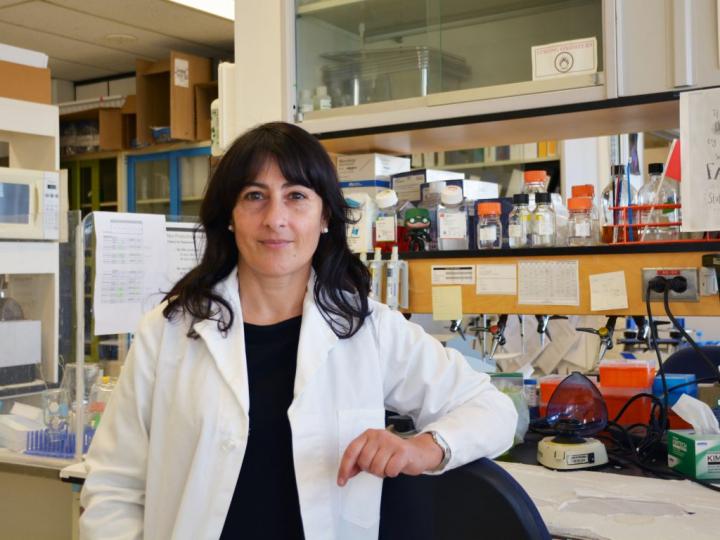Professor and GlycoNet Investigator Simonetta Sipione’s research awarded major grant from the Canadian Institutes of Health Research

Credit: GlycoNet
Dr. Simonetta Sipione, GlycoNet Investigator and Professor in the Department of Pharmacology at the University of Alberta, was recently awarded a major five-year grant from the Canadian Institutes of Health Research (CIHR), worth $1.04 million. The project builds upon work previously funded by GlycoNet.
The project aims to clarify the therapeutic role of gangliosides, a family of glycolipid molecules that have properties of both lipids and carbohydrates, in the brain.
“These gangliosides are highly enriched in the healthy brain. They help brain cells communicate with each other and with the environment,” says Sipione, lead Investigator on the project.
“During aging and in some cases of neurodegenerative diseases, including Huntington’s disease and Parkinson’s disease, the level of some of the gangliosides is lower in the patient’s brain,” says Sipione. “We are interested in finding out why and developing a viable treatment that tackles the root of the disease, not just the symptoms.”
Currently, patients who have neurodegenerative diseases are usually prescribed with medications to improve movement and fight depression. However, none of these medications address the disease cause, which is the accumulation of toxic proteins in the brain. Finding ways to prevent this toxic buildup will turn the table on current methods to treat these diseases.
Previously, Sipione’s team was able to slow down neurodegeneration in a mouse model of Huntington’s disease through injection of a type of ganglioside called GM1 into the mouse brain.
“Restoring the level of GM1 in the brain could be a potential treatment for those who experience, or show signs of, neurodegeneration,” says Sipione. Now, her team is investigating the mechanism of action, as this knowledge would shed light on other aspects in neuro- and glycoscience and help develop treatments.
According to Sipione, the CIHR grant will enable her team to find out how GM1 helps the brain dispose of, or even prevent, the buildup of toxic proteins.
“To use a simple analogy, toxic proteins are like garbage and your brain is like a house. If garbage accumulates in the house and no one throws it out, your house is going to smell. We think GM1 and other gangliosides have a key role in instructing brain cells so that the garbage (toxic proteins) can be thrown out properly and eliminated by trash collectors, which are other biomolecules in the brain,” she adds. “Our studies will help determine the underlying mechanism of GM1’s therapeutic effects and whether other similar molecules could be a novel treatment, not only for Huntington’s disease, but also potentially for Parkinson’s and Alzheimer’s disease.”
The Huntington Society of Canada reports that approximately 1 in 7,000 people in Canada has Huntington’s disease. Another report from The Alzheimer’s Society suggests that over 500,000 Canadians are living with dementia that results from neurogenerative disorders including Alzheimer’s and Parkinson’s disease. As seniors in Canada are a rapidly growing segment of the population, by 2031, it is estimated that the number will increase to 937,000.
Sipione, who trained as a biochemist, believes that her laboratory’s interdisciplinary approach provides a unique opportunity to uncover issues central to brain health. Her goal is to leverage knowledge from her research discoveries to create tangible benefits for people both in Canada and worldwide.
###
Media Contact
Ali Chou
[email protected]
Original Source
https:/




